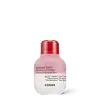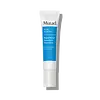What's inside
What's inside
 Key Ingredients
Key Ingredients

 Benefits
Benefits

 Concerns
Concerns

 Ingredients Side-by-side
Ingredients Side-by-side

Alcohol
AntimicrobialCalamine
AbsorbentWater
Skin ConditioningGlycerin
HumectantTitanium Dioxide
Cosmetic ColorantZinc Oxide
Cosmetic ColorantButylene Glycol
HumectantSalix Alba Bark Extract
AstringentEthyl Hexanediol
Solvent1,2-Hexanediol
Skin ConditioningDimethyl Sulfone
SolventSilica
AbrasiveSalicylic Acid
MaskingColloidal Sulfur
AntimicrobialAcacia Senegal Gum
MaskingCamphor
MaskingCyanocobalamin
Skin ConditioningMadecassic Acid
Skin ConditioningAsiaticoside
AntioxidantAsiatic Acid
Skin ConditioningSalicylic Acid 2%
MaskingWater
Skin ConditioningAlcohol
AntimicrobialHamamelis Virginiana Water
AstringentPropanediol
SolventPentylene Glycol
Skin ConditioningGlycerin
HumectantSilica
AbrasiveButylene Glycol
HumectantPolyacrylate Crosspolymer-6
Emulsion StabilisingC12-15 Alkyl Lactate
EmollientAesculus Hippocastanum Seed Extract
Skin ConditioningAvena Sativa Kernel Extract
AbrasiveUrea
BufferingYeast Amino Acids
HumectantTrehalose
HumectantInositol
HumectantTaurine
BufferingBetaine
HumectantThymol
AntimicrobialTerpineol
MaskingHydroxyphenyl Propamidobenzoic Acid
Skin ConditioningButyrospermum Parkii Butter
Skin ConditioningShea Butter Ethyl Esters
Emollient4-T-Butylcyclohexanol
MaskingDisodium EDTA
Sodium Hydroxide
BufferingSalicylic Acid 2%, Water, Alcohol, Hamamelis Virginiana Water, Propanediol, Pentylene Glycol, Glycerin, Silica, Butylene Glycol, Polyacrylate Crosspolymer-6, C12-15 Alkyl Lactate, Aesculus Hippocastanum Seed Extract, Avena Sativa Kernel Extract, Urea, Yeast Amino Acids, Trehalose, Inositol, Taurine, Betaine, Thymol, Terpineol, Hydroxyphenyl Propamidobenzoic Acid, Butyrospermum Parkii Butter, Shea Butter Ethyl Esters, 4-T-Butylcyclohexanol, Disodium EDTA, Sodium Hydroxide
 Reviews
Reviews

Ingredients Explained
These ingredients are found in both products.
Ingredients higher up in an ingredient list are typically present in a larger amount.
Alcohol comes in many different forms. Different types of alcohol will have different effects on skin. This ingredient is usually an astringent alcohol.
These alcohols are drying on the skin. They may strip away your skin's natural oils and even damage your skin barrier. Astringent alcohols may also irritate skin.
Other types of astringent alcohols include:
According to the National Rosacea Society based in the US, you should be mindful of products with these alcohols in the top half of ingredients.
Any type of sanitizing product will have high amounts of alcohol to help kill bacteria and viruses.
Fatty alcohols come from plant oils such as coconut oil. These can help hydrate the skin and are non-irritating. Some fatty alcohols include cetyl and stearyl alcohol.
Learn more about AlcoholButylene Glycol (or BG) is used within cosmetic products for a few different reasons:
Overall, Butylene Glycol is a safe and well-rounded ingredient that works well with other ingredients.
Though this ingredient works well with most skin types, some people with sensitive skin may experience a reaction such as allergic rashes, closed comedones, or itchiness.
Learn more about Butylene GlycolGlycerin is already naturally found in your skin. It helps moisturize and protect your skin.
A study from 2016 found glycerin to be more effective as a humectant than AHAs and hyaluronic acid.
As a humectant, it helps the skin stay hydrated by pulling moisture to your skin. The low molecular weight of glycerin allows it to pull moisture into the deeper layers of your skin.
Hydrated skin improves your skin barrier; Your skin barrier helps protect against irritants and bacteria.
Glycerin has also been found to have antimicrobial and antiviral properties. Due to these properties, glycerin is often used in wound and burn treatments.
In cosmetics, glycerin is usually derived from plants such as soybean or palm. However, it can also be sourced from animals, such as tallow or animal fat.
This ingredient is organic, colorless, odorless, and non-toxic.
Glycerin is the name for this ingredient in American English. British English uses Glycerol/Glycerine.
Learn more about GlycerinSalicylic Acid (also known as beta hydroxy acid or BHA) is a well-known ingredient for treating skin that struggles with acne and clogged pores. It exfoliates both the skin's surface and deep within the pores to help clear out buildup, control oil, and reduce inflammation.
Unlike AHAs (alpha hydroxy acids), salicylic acid is oil-soluble. This allows it to penetrate into pores which makes it especially effective for treating blackheads and preventing future breakouts.
Salicylic acid is also known for its soothing properties. It has a similar structure to aspirin and can calm inflamed or irritated skin, making it a good option for acne-prone skin that is also sensitive.
Concentrations of 0.5-2% are recognized by the U.S. FDA as an over-the-counter topical acne product.
It can cause irritation and/or dryness if one's skin already has a compromised moisture barrier, so it's best to focus on repairing that before introducing this ingredient into your routine.
While salicylic acid does not increase sun sensitivity, it’s still important to wear sunscreen daily to protect your skin.
If you are looking for the ingredient called BHA or Butylated Hydroxyanisole, click here.
Learn more about Salicylic AcidSilica, also known as silicon dioxide, is a naturally occurring mineral. It is used as a fine, spherical, and porous powder in cosmetics.
Though it has exfoliant properties, the function of silica varies depending on the product.
The unique structure of silica enhances the spreadability and adds smoothness, making it a great texture enhancer.
It is also used as an active carrier, emulsifier, and mattifier due to its ability to absorb excess oil.
In some products, tiny microneedles called spicules are made from silica or hydrolyzed sponge. When you rub them in, they lightly polish away dead skin layers and enhance the penetration of active ingredients.
Learn more about SilicaWater. It's the most common cosmetic ingredient of all. You'll usually see it at the top of ingredient lists, meaning that it makes up the largest part of the product.
So why is it so popular? Water most often acts as a solvent - this means that it helps dissolve other ingredients into the formulation.
You'll also recognize water as that liquid we all need to stay alive. If you see this, drink a glass of water. Stay hydrated!
Learn more about Water